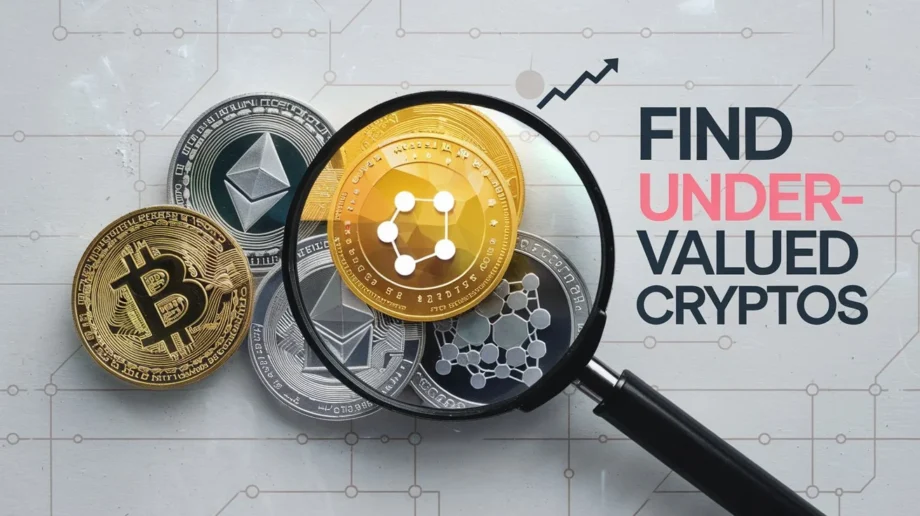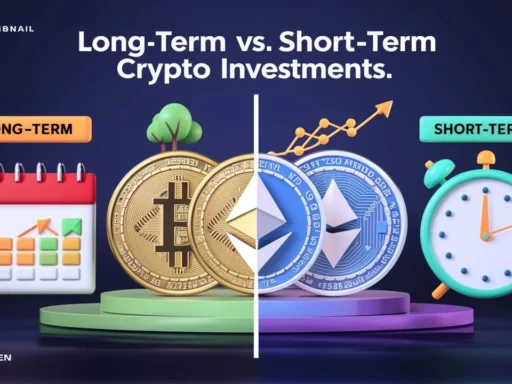Are you tired of missing out on the big crypto gains? Do you want to learn how to spot the next 100x cryptocurrency before it explodes? In this comprehensive guide, we’ll show you the secrets to finding undervalued cryptocurrencies with massive growth potential. Get ready to uncover the hidden gems that could transform your portfolio!
Introduction
Investing in cryptocurrencies is like a treasure hunt. The potential rewards are astronomical, but the risks are high. One of the keys to success is finding undervalued cryptocurrencies before the market catches on. These hidden gems often fly under the radar, offering tremendous upside potential for savvy investors.
In this article, we’ll dive deep into the world of undervalued cryptocurrencies. We’ll explore the factors that contribute to a coin being undervalued, share a step-by-step guide on how to identify them, and discuss the risks involved. By the end, you’ll have a solid understanding of how to spot the next 100x cryptocurrency and potentially maximize your returns.
What Makes a Cryptocurrency Undervalued?
Before we dive into the specifics, let’s first define what it means for a cryptocurrency to be undervalued. In simple terms, an undervalued coin is one that is currently priced lower than its intrinsic value based on factors like technology, adoption, and future potential.
There are several reasons why a cryptocurrency might be undervalued:
- Market sentiment and hype: Coins can be overlooked if they are overshadowed by trends or excessive hype around other projects.
- Development activity and technology: Strong development and consistent updates can be great indicators of future value, even if the market hasn’t recognized it yet.
- Real-world use cases and adoption: Cryptocurrencies with growing partnerships, integrations, and real-world applications often have strong growth potential.
- Tokenomics and supply dynamics: Factors like limited supply, deflationary mechanisms, and staking incentives can lead to future price appreciation.
Step-by-Step Guide to Finding Undervalued Cryptocurrencies
1. Analyze Market Sentiment
Start by gauging how the market feels about a particular cryptocurrency. Social media platforms like Twitter, Reddit, and Telegram are great places to gauge sentiment. Negative sentiment can drive down prices temporarily, making it a potential buying opportunity.
You can also use tools like LunarCrush or Google Trends to track general sentiment and see if a coin is undervalued due to a temporary fall in popularity.
2. Evaluate the Technology
Understanding the technology behind a cryptocurrency is essential. Does it offer something unique or solve a problem in a new way? Review the whitepaper and GitHub repository to get a sense of the project’s technological foundation and development activity.
Look for clear goals, a feasible roadmap, and active development. A strong technological foundation is a key indicator of an undervalued cryptocurrency.
3. Assess the Team and Roadmap
A cryptocurrency is only as strong as its team and roadmap. Research the team’s history, transparency, and how well they stick to their development goals. A competent, experienced, and transparent team is often a sign of an undervalued coin with strong growth potential.
4. Study the Tokenomics
Tokenomics can make or break a cryptocurrency’s future value. Always assess factors like the total supply of tokens, how new tokens are introduced into circulation, and whether there are mechanisms to reduce supply over time.
Projects with a low maximum supply or a system to burn tokens over time can increase scarcity, potentially driving up the price. Look for controlled inflation rates and supply dynamics that align with market demand.
5. Analyze Real-World Use Cases
Cryptocurrencies with tangible real-world applications often have strong growth potential, especially if they are gaining traction in major industries. Look at the partnerships and integrations within the project’s ecosystem. If it’s being adopted by major companies or used in significant ways, its price may not yet reflect its full value.
Risks and Considerations
While finding undervalued cryptocurrencies can be a highly rewarding strategy, it’s important to consider the risks involved:
- Volatility and market risks: Cryptocurrency markets are notoriously volatile, and prices can fluctuate wildly based on various factors.
- Regulatory risks: Cryptocurrencies often face regulatory challenges, with government policies shifting frequently. A project may be undervalued simply because it faces legal hurdles that could stifle its adoption or development.
- Technology and security risks: No matter how undervalued a cryptocurrency may seem, always assess its security features. A security breach or failure in the underlying technology can lead to a significant drop in value.
To mitigate these risks, it’s crucial to diversify your portfolio, stay informed about regulatory changes, and invest only what you can afford to lose.
Examples of Historically Undervalued Cryptocurrencies
Let’s take a look at some examples of cryptocurrencies that were once considered undervalued:
- Bitcoin: In its early days, many saw Bitcoin as a passing fad. Early investors who recognized its potential have since reaped enormous rewards as it became one of the most valuable assets in the world.
- Ethereum: Before the explosion of ICOs and DeFi, Ethereum was often overlooked by those who didn’t fully understand the potential of smart contracts. Today, it’s one of the most valuable and widely used cryptocurrencies.
- Solana and Cardano: Both Solana and Cardano were undervalued during their initial development phases, but their robust technologies and ecosystems have since driven significant price appreciation.
Conclusion
Finding undervalued cryptocurrencies is not an exact science, but by focusing on fundamentals like technology, use case, team competence, and tokenomics, you can increase your chances of identifying potential gems that others might be overlooking.
Remember, investing in cryptocurrencies carries risks, so always do your own research, diversify your portfolio, and invest only what you can afford to lose. With the right approach and a bit of luck, you might just find the next 100x cryptocurrency and transform your portfolio in the process.





